
|   |

|   |
Shinjan Nrityalaya’s tribute to Gurus Raghunath Dutta and Kelucharan Mohapatra - Nita Vidyarthi e-mail: nitavidyarthi@gmail.com Photos courtesy: Aloka Kanungo April 21, 2015 There cannot be a better way to pay tribute to one’s gurus than through dance. Every year, Odissi dancer Aloka Kanungo and her institution Shinjan Nrityalaya, Kolkata, organize an evening of classical Odissi dance recitals in memory of her gurus Raghunath Dutta and Kelucharan Mohapatra, not only to acknowledge their significant contribution to the art but also as a mark of respect and gratitude to have moulded her into an acclaimed dancer. Odissi exponents from different parts of the country are invited to perform in her one-day Shradhanjali. This year, the reverence through rhythms saw three established dancers from different parts of the country together with a senior and a talented junior from Shinjan, trained by Kanungo. The inauguration by lighting the lamp at the Rabindranath Tagore Centre, ICCR, Kolkata by the Regional Director Minakshi Mishra and Aloka Kanungo was followed by offering of flowers at the photographs of the gurus placed at the front corner of the stage by young learners and senior dancers. After the opening address by Kanungo on her gurus, the aim and objectives of her institution, the recital began by talented 10-year-old Priyanka Kundu whose confidence in the presentation of Batu in Ektali reflected the foundation that Kanungo had laid in her as a teacher. A more matured presentation was by the senior dancer Sarbani Das who is now in the repertory of Shinjan. Sarbani’s ‘Durga Vandana’ in ragamalika, talamalika proved her training and steadiness. She dances with zest and her nritta is impressive, but in order to concentrate on the grammar, her expressions suffer. The tandava elements are her strong points but too much display of energy diluted the intensity of the concluding stotra “Jayanti mangala kali bhadrakali kapalini.” 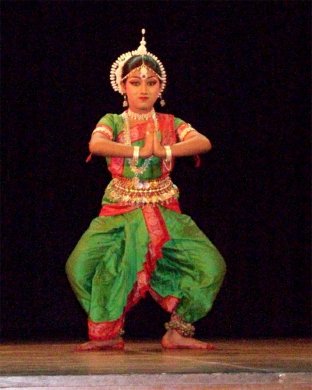 Priyanka Kundu 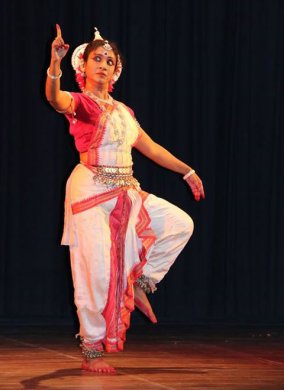 Sarbani Das 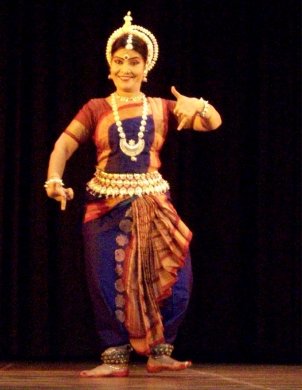 Suhag Nalini Das 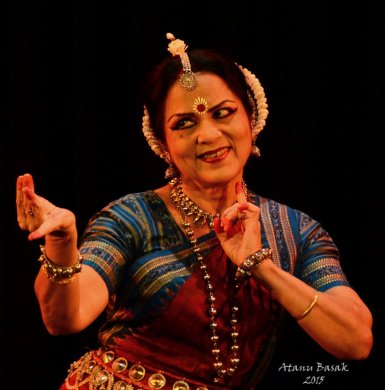 Debi Basu Suhag Nalini Das from Bhubaneswar belongs to the gharana of the legendary Guru Pankaj Charan Das. She presented the ‘Ahalya’ episode from ‘Panchakanya Stuti’ beginning with a nritta item in madhyalaya leading to the shloka “Bhangitam bhuvanam....bichitra besha Usha ramyam” in talamalika, raga Kalyan sung by Harihar Panda. The choreography by Pankaj Charan Das was polished by his son Sarat, intercepting the shlokas with pallavi at times. Being the daughter-in-law of the legendary guru, expectations run high on this senior, otherwise skilful dancer but her recital did not rise above mediocrity. The poignant piece of Ahalya cursed by her husband Rishi Gautama and turned to a stone requires good abhinaya skills. Justice, truth, betrayal, guilt, love, honour and courage embedded in the Ahalya episode (between the relationships of Ahalya, Rishi Gautama, Indra and others) were on trial in the dancer’s portrayal and execution. The prolonged fixed smile contradicted the consequences. On the contrary, a very accomplished senior dancer Debi Basu from Mumbai, trained by Kelubabu mesmerized the audience with her raga Chhayanat, jati taal based abhinaya “malli mala Shyama ku debi.” The lilting music, with the beauty of the lasya of Odissi by Debi as Radha unfolded the tender poetry of kavi samrat Upendra Bhanja. Her bhangis, facial expressions, especially her smile and her eyes did it all. Guru Kelucharan Mohapatra’s abhinaya numbers are embellished with pure dance and Debi showed her grip over rhythm with her competent footwork in the number. As utkantha nayika Radha in “Nath Hare, sidhati Radha basagriha” leading to “Pashyati dishi dishi,” the ultimate union with Krishna, was a captivating Jayadeva ashtapadi in Ektali, the body contours of the dancer undulating with the musical phrases of raag Desh. A creditable performance indeed! 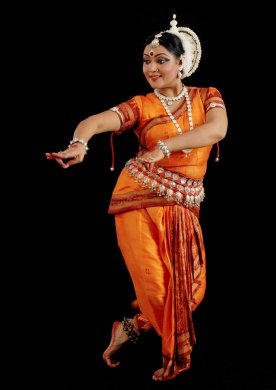 Photo: Ashwani Chopra The concluding item was by Kavita Dwibedi from Delhi. An established dancer with solid training and daughter of Guru Hare Krishna Behera, Kavita proved her competence in the mangalacharan “Shantakaram Bhujagashayanam, bhajey brajeka mandanam, samasta papa khandanam” ending with “Krishna Tubhyam namaha” in tishra triputa and khemta based on raga Todi. She has a strong presence, is heavy on her feet and is an energetic dancer with fine, impactful footwork and chiselled hastas and is capable of performing a perfect broad chauka. The Odiya abhinaya “Kaahin goley Murali phunka” in Mishra Kafi and taal khemta is a beautiful old song by Kabi Banamali depicting the “makhan chori” and the vastraharan of the Gopis and the pranks of young Krishna. Playful movements and jumps, good facial expression and joyful dancing led gradually to the ashtapadi “Yahi Madhava” but the thread in the garlanding of the thematic content to this path was a bit discontinuous. Live accompaniment with vocal support by Suresh Sethi, mardala by Manas Sarengi and flute by Prabhu Prasad Behera made for a pleasing performance. Dr. Nita Vidyarthi is a critic of performing arts, specialising in dance, dance theatre and expressions and is a regular contributor to The Hindu, and the Statesman Kolkata in dance, vocal music and theatre. She is trained in Kathak, Bharatanatyam and Manipuri as well as vocal, semi-classical music and Rabindra Sangeet. A Science communicator, Ph.D. in Polymer Science, Commonwealth Scholar and a retired Professor of Chemistry, Nita devotes most of her time to dance and theatre writing. |